Feeling overwhelmed by constant stress or mental clutter? You’re not alone. In today’s fast-paced world, many people are turning to mindfulness meditation as a natural way to find balance, clarity, and calm. This simple yet powerful practice trains your mind to focus on the present moment, helping to reduce anxiety, improve concentration, and boost overall well-being.
If you’re new to meditation, don’t worry—this guide is designed just for you. We’ll walk through what mindfulness is, why it works, and how to start your own practice with confidence and ease. Whether you’re seeking inner peace, mental sharpness, or better emotional health, this beginner’s guide to mindfulness meditation is your first step toward a more centered and mindful life.
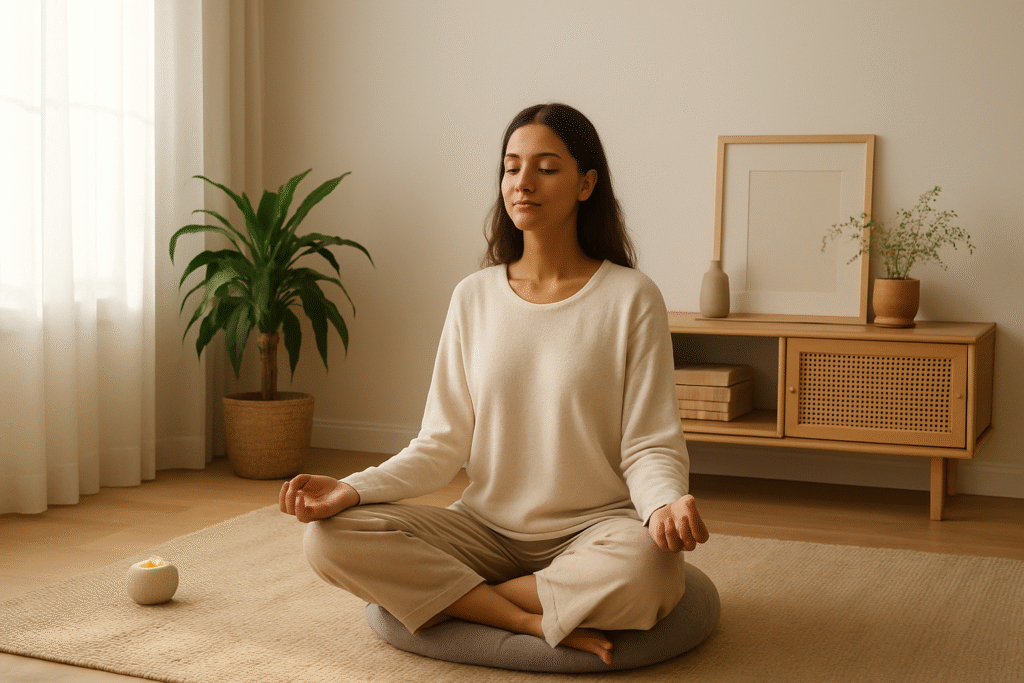
What is Mindfulness Meditation?
Understanding the Basics
Mindfulness Meditation is a mental training practice that teaches you to slow down racing thoughts, let go of negativity, and calm both your mind and body. At its core, it means paying full attention to what’s happening in the present moment—your breath, your body, your thoughts—without trying to change anything or pass judgment.
It’s not about emptying your mind or achieving a state of eternal bliss. Instead, it’s about observing your inner world with clarity and compassion, which leads to greater self-awareness and emotional balance.
A Brief History and Modern Evolution
Mindfulness Meditation originates from ancient Buddhist teachings, but its benefits have transcended spiritual traditions and are now widely supported by modern science. Jon Kabat-Zinn, a pioneer in this field, introduced the concept to Western medicine through his Mindfulness-Based Stress Reduction (MBSR) program in the 1970s.
Today, research from institutions like Harvard and the National Institutes of Health confirms that regular mindfulness practice can improve focus, reduce stress, and even reshape areas of the brain responsible for memory and emotional regulation.
📌 Did You Know?
A study from Harvard found that practicing Mindfulness Meditation for just eight weeks can increase gray matter in the hippocampus—the brain region involved in learning and memory.
Benefits of Mindfulness Meditation
Mindfulness Meditation offers a wide range of scientifically supported benefits that touch nearly every aspect of your life—mental, emotional, and even physical. Whether you want to manage stress, improve focus, or just feel more balanced day-to-day, the practice can make a meaningful difference.
1. Reduces Stress and Anxiety
One of the most well-known benefits of Mindfulness Meditation is its ability to lower stress. By helping you observe your thoughts and emotions without judgment, you become less reactive to stress triggers. Studies show that mindfulness reduces cortisol—the body’s primary stress hormone.
2. Improves Emotional Regulation
With regular practice, Mindfulness Meditation strengthens the brain regions involved in emotional control. This means you’re better able to respond thoughtfully instead of reacting impulsively, especially in difficult situations.
3. Enhances Focus and Mental Clarity
Mindfulness Meditation improves attention span and concentration by training the mind to stay present. In fact, a study published in Psychological Science showed that even a few weeks of practice can boost cognitive flexibility and working memory.
4. Supports Physical Health
Mindfulness has been linked to numerous physical health improvements, including:
- Lower blood pressure
- Better sleep quality
- Strengthened immune system
- Reduced chronic pain symptoms
5. Promotes Self-Awareness and Compassion
Practicing Mindfulness Meditation encourages a deeper connection to yourself and others. It can lead to greater self-acceptance and foster empathy, patience, and kindness in your daily interactions.
💡 Quick Tip
Notice moments in your day when you’re on autopilot—during meals, showers, or commutes—and bring mindful attention to those moments. These are perfect times to apply your meditation training in real life.
How to Start Mindfulness Meditation: A Step-by-Step Guide for Beginners

Beginning Mindfulness Meditation may feel unfamiliar at first, but with the right approach, it becomes a deeply rewarding habit. Here’s a simple, supportive guide to help you start your journey with clarity and confidence.
Step 1: Choose a Quiet, Comfortable Space
Find a peaceful spot where you won’t be interrupted for a few minutes. It could be a cozy corner in your home, a bench in a park, or even your car parked in a quiet area. Sit comfortably—on a cushion, chair, or floor—and keep your back straight but relaxed.
💡 Quick Tip: Avoid lying down at first, as it may lead to sleepiness instead of awareness.
Step 2: Set a Gentle Timer
Start small. Set a timer for 2 to 5 minutes, and gradually work your way up to 10 or 20 minutes. Use a soft bell sound to mark the start and end—apps like Insight Timer or Headspace can be great tools for this.
Step 3: Focus on Your Breath
Gently bring your attention to your breathing. Notice the sensation of air flowing in through your nose and out through your mouth. Don’t try to control your breath—just observe it.
Your mind will wander. That’s completely normal. When it does, kindly guide your focus back to the breath.
✅ Expert Note: Every time you return your attention to the breath, you’re strengthening your mind—like a bicep curl for the brain.
Step 4: Acknowledge Thoughts Without Judgment
When thoughts, feelings, or body sensations arise, try not to label them as “good” or “bad.” Just notice them. Treat your thoughts like clouds drifting by—acknowledge them and let them pass.
💭 “I see this thought, I let it go, and I come back to my breath.”
Step 5: End with Gratitude or a Kind Reflection
Before opening your eyes or moving on with your day, take a moment to thank yourself for showing up. Even one minute of mindful awareness is progress.
🧘♂️ “Today, I gave my mind a chance to rest. That matters.”
Common Mistakes Beginners Make — and How to Avoid Them
Starting your Mindfulness Meditation journey is exciting, but it’s normal to face a few bumps along the way. Here are some of the most common beginner pitfalls—and how to navigate through them with confidence and self-compassion.
1. Expecting Immediate Results
Many beginners hope to feel calm or “blissful” after the first session. While that can happen, the real power of Mindfulness Meditation lies in consistent practice over time.
✅ What to do instead: Treat each session as practice, not performance. Think of it like going to the gym for your mind—you’re training, not testing.
2. Believing You’re “Doing It Wrong”
A wandering mind doesn’t mean failure. It means you’re human. Even experienced meditators get distracted—often.
💡 Mindfulness isn’t about stopping thoughts. It’s about noticing them and gently returning to the present moment.
3. Meditating in Uncomfortable Positions
If you’re physically uncomfortable, it’s hard to focus. Sitting in a rigid posture for too long can cause pain or tension.
✅ Use a cushion, back support, or chair—whatever helps you stay upright and relaxed. Comfort encourages consistency.
4. Overthinking the Technique
Beginners sometimes try too hard to “get it right” and end up stressing over the details—breath pace, posture, or background noise.
💭 Mindfulness is about awareness, not perfection. Let go of control and just observe what is happening, as it is.
5. Quitting Too Soon
It’s easy to stop after a few sessions if you don’t feel dramatic changes. But the benefits of Mindfulness Meditation compound over time.
⏳ Stick with it for at least a few weeks. Even five minutes a day can lead to visible results within a month.
Different Types of Mindfulness Meditation Techniques You Can Try
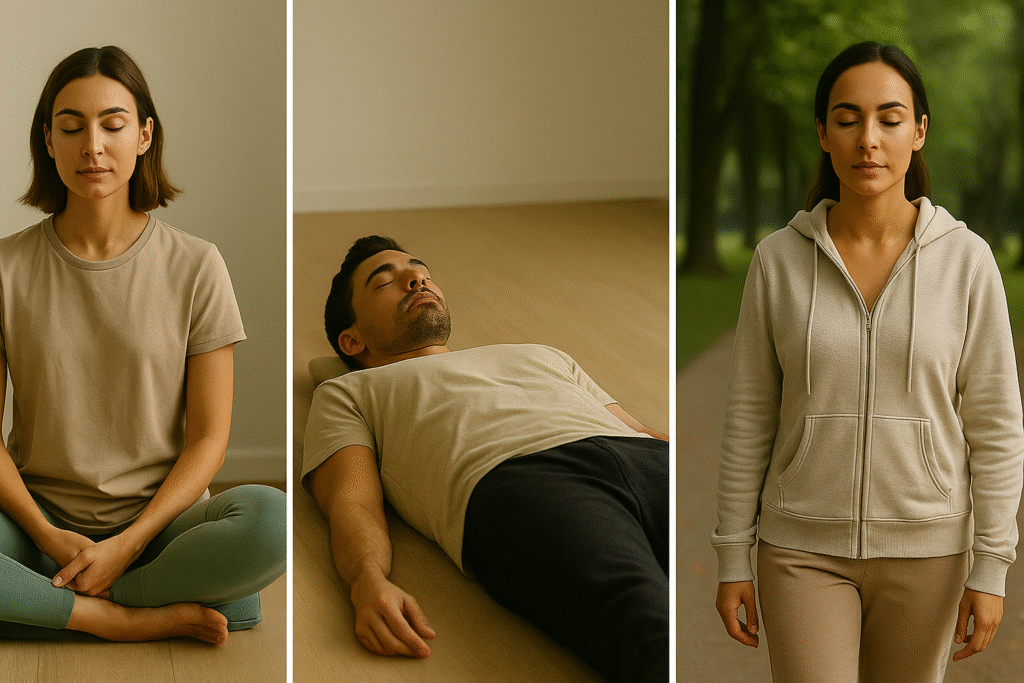
There’s no one-size-fits-all approach to Mindfulness Meditation. Exploring different techniques allows you to find the one that resonates with your lifestyle, personality, and emotional needs. Here are the most popular and beginner-friendly types you can try:
1. Breath Awareness Meditation
This is the most classic and accessible form. You simply focus your attention on the breath—its rhythm, sensation, and flow. Each time your mind wanders, gently bring it back to the breath.
🌬️ Best for: Improving focus, calming anxiety, and getting started.
2. Body Scan Meditation
This involves mentally “scanning” your body from head to toe, paying attention to each area with awareness and relaxation. It helps identify tension or pain and encourages deep rest.
🛌 Best for: Stress relief, improving sleep, and reconnecting with your body.
3. Loving-Kindness Meditation (Metta)
In this practice, you silently repeat phrases of goodwill toward yourself and others, such as “May I be happy. May you be safe.” It cultivates compassion and emotional healing.
❤️ Best for: Boosting empathy, forgiveness, and emotional well-being.
4. Walking Meditation
This is a mindful walking technique where each step is taken with full awareness—of your breath, body movement, and surroundings. It’s great for people who find sitting meditation difficult.
🚶 Best for: People with restlessness or active lifestyles.
5. Visualization and Guided Meditation
Guided practices use imagery, stories, or metaphors to lead you into a state of calm. Many apps offer sessions focused on confidence, sleep, or focus.
🎧 Best for: Beginners who prefer structure, or those meditating to specific goals.
📌 Did You Know?
Trying different techniques over time helps you build a “mindfulness toolbox” so you can choose what works best depending on your mood, energy level, or needs that day.
How to Make Mindfulness Meditation Part of Your Daily Life
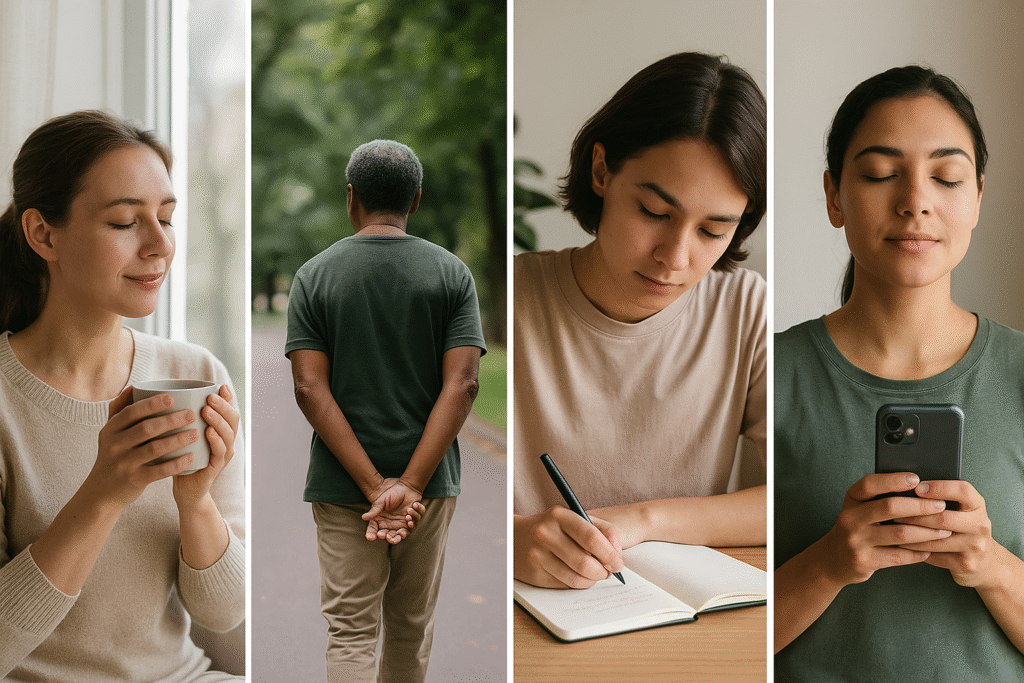
Meditation is most effective when practiced consistently. But in a world full of distractions and tight schedules, how can you make Mindfulness Meditation a natural part of your routine? The key lies in small, strategic steps that align with your lifestyle.
1. Start Small and Set Realistic Goals
Don’t feel pressured to meditate for 30 minutes on day one. Begin with 2 to 5 minutes daily, and slowly build up your duration.
📆 Example: Week 1 – 3 minutes/day. Week 2 – 5 minutes/day. Week 3 – 7 minutes/day.
2. Anchor Your Practice to Existing Habits
Attach your meditation time to something you already do—like brushing your teeth, drinking coffee, or commuting. These “anchors” make it easier to stay consistent.
☕ “After I pour my morning coffee, I’ll sit for 3 minutes of breath awareness.”
3. Create a Mindful Space
Designate a calming space in your home. It doesn’t need to be elaborate—just a quiet corner with a cushion, candle, or inspiring object can enhance your experience and intention.
4. Use Reminders and Tools
Apps, timers, or even sticky notes can gently remind you to pause and breathe. Many mindfulness apps offer streaks and progress tracking, which can boost motivation.
📱 Recommended apps: Insight Timer, Calm, Headspace.
5. Practice Informal Mindfulness During Daily Tasks
Mindfulness doesn’t only happen on a cushion. Practice while:
- Washing dishes
- Taking a shower
- Waiting in line
- Walking your dog
Simply bring full attention to the task and your breath.
🧠 These moments count—they strengthen your mindfulness muscle throughout the day.
6. Reflect on Your Progress Weekly
Each week, take 2–3 minutes to journal how you felt before and after your sessions. Notice patterns, wins, or challenges. This reflection reinforces growth and keeps you engaged.
Tracking Progress: What to Expect in the First 30 Days
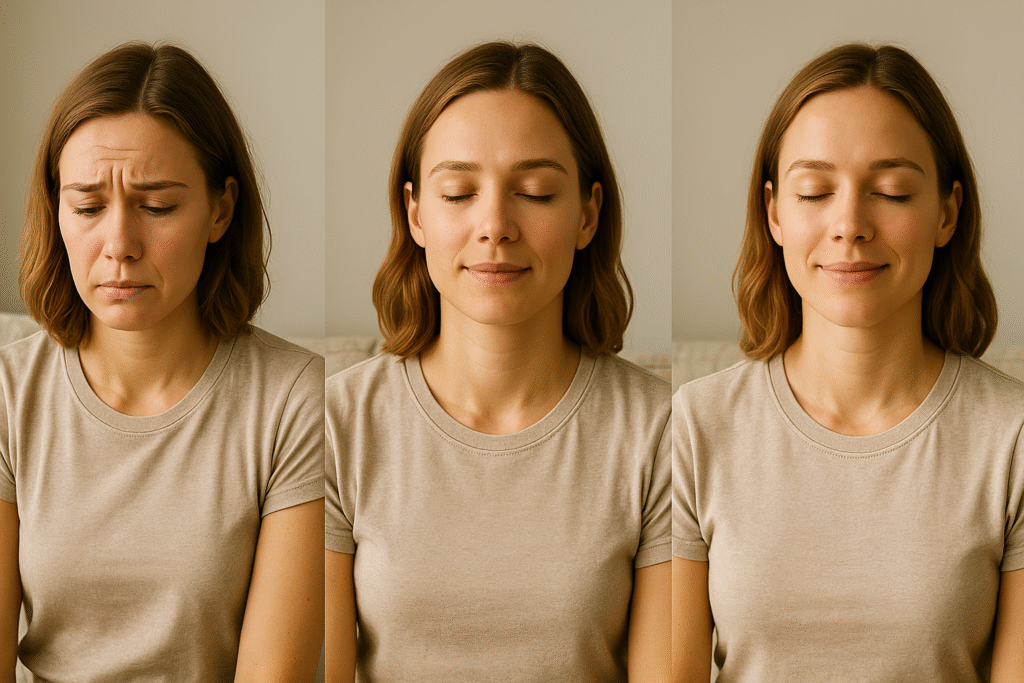
Mindfulness Meditation is a subtle but powerful practice. While you might not notice dramatic changes overnight, real transformation happens through small, consistent shifts in how you think, feel, and respond to the world.
Here’s a breakdown of what many beginners experience in their first month:
Week 1: Awareness of Mental Noise
- You’ll likely notice how busy your mind actually is.
- Distractions and overthinking might seem more obvious—but that’s progress!
- Simply noticing your inner world is the first sign of growing awareness.
💭 You’re not failing—you’re waking up to your thoughts.
Week 2: Moments of Calm and Focus
- You may begin to feel short, clear moments of presence.
- Stressful situations might feel slightly more manageable.
- You’ll return to your breath more naturally without frustration.
✅ Small victories—like choosing calm over reaction—start appearing.
Week 3: Emotional Awareness and Self-Compassion
- You’ll likely start recognizing emotional patterns and triggers.
- There may be a softening in how you treat yourself internally.
- Journaling becomes more insightful, and reflection deeper.
❤️ You’re developing emotional intelligence—one breath at a time.
Week 4: Integration into Daily Life
- Meditation begins to feel like a personal refuge rather than a chore.
- You might catch yourself practicing mindfulness without planning to.
- Mindfulness starts showing up in conversations, eating, or even driving.
🌱 This is where habit turns into lifestyle.
📌 Remember: Progress in mindfulness is not linear. Some days will feel easier than others. What matters most is showing up—even if only for a minute.
Conclusion: Your Mindfulness Journey Starts Now
Mindfulness Meditation isn’t about perfection—it’s about presence. It’s about learning to meet each moment with openness, awareness, and compassion, even when your mind is busy or your day is chaotic. The beauty of this practice is that it meets you exactly where you are.
As a beginner, you’ve already taken the most important step: starting. With just a few minutes a day, you can retrain your brain, reduce stress, and reconnect with your inner calm. Over time, these small daily choices create lasting transformation—not just in how you feel, but in how you live.
So don’t worry about doing it “right.” Just breathe, notice, and begin again—each time with kindness. Your mind will thank you.
Main Takeaways
- Mindfulness Meditation is about being present, not perfect.
- You don’t need to stop thinking—you just learn to observe without judgment.
- Starting with just 2–5 minutes a day can yield meaningful benefits.
- There are multiple styles—like breath awareness, body scan, and loving-kindness—so explore what fits your lifestyle.
- Progress is subtle and gradual. Stay consistent and compassionate with yourself.
- Mindfulness can be practiced during everyday tasks, not just formal meditation sessions.
- Within 30 days, you can experience real shifts in focus, calm, and emotional balance.


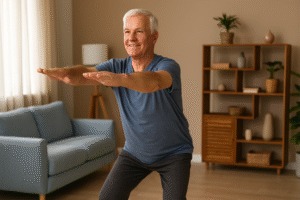





3 Responses